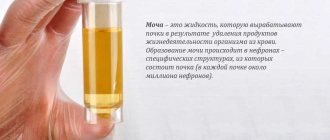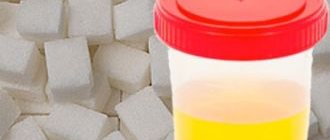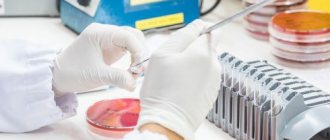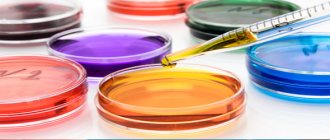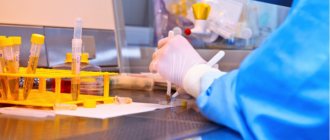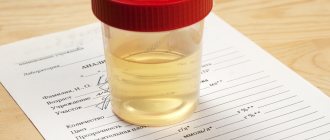The Nechiporenko analysis is carried out to determine the level of functional capacity of the kidneys, bladder, ureters and excretory canal by determining the level of red blood cells, leukocytes, and casts in the urine. Also, the Nechiporenko test is recommended for a certain type of patient in whom a general urine test showed an excess of the level of substances indicating a pathological condition of liver tissue, an inflammatory process in the gallbladder, or a metabolic disorder in the body.
In addition to confirming reasonable suspicions of a specific disease, urine testing according to Nechiporenko is indicated for patients receiving drug, instrumental or surgical therapy of internal organs. In this case, the results of a urine test according to Nechiporenko allow for effective monitoring of the patient’s health status and the level of performance of his body.
Let us consider in more detail what urine analysis according to Nechiporenko shows, as well as the advisability of its use in the comprehensive diagnosis of diseases of the excretory system.
Features of the study
Thanks to a general urine test, the doctor is able to determine the presence of toxic substances in the body of adults and children, the amount of salts, organic and other substances.
Examination of the fluid helps determine whether destructive processes are developing in the kidneys, heart, liver, and gastrointestinal tract. At the same time, although a general urine test can show deviations from the norm, it is impossible to find out exactly what inflammatory processes are occurring in the body. Therefore, if the results are poor, to clarify the situation, the doctor prescribes a urine test according to Nechiporenko, with which you can assess the condition of the kidneys and urinary system.
Thanks to the Nechiporenko analysis, it is possible to determine:
- The presence of red blood cells is the name given to the blood cells that give it its red color. Inside them is hemoglobin, whose task is to transport oxygen and carbon dioxide from the lungs to the cells and back. They should not be present in the urine of a healthy person, but still a small amount is allowed (up to 1 thousand in 1 ml). Detection of red blood cells in the urine signals possible kidney problems, including tuberculosis in the urinary tract and kidneys.
- The presence of leukocytes are blood cells that are part of the immune system. They should be in the urine only in small quantities (up to 2 thousand in 1 ml). Exceeding the norm of immune cells indicates inflammation of the kidneys, bladder, ureter, urethra, and prostate. May indicate kidney stones, urolithiasis, or tumor.
- The presence of cylinders is the name given to formations that are formed from protein in the tubules of the kidneys under the influence of the acidic reaction of urine (they may also contain red blood cells). Thus, in the absence of protein, casts in the urine are unable to form. If they are detected, it means that there is an increased amount of protein in the urine, which indicates illness. Therefore, a healthy person should not have casts in the urine, but a small amount is allowed (up to 20 in 1 ml). If they are, this may mean there are problems with the kidneys.
Pregnant women should know that during the period of bearing a child, the results of a urine test according to Nechiporenko are often close to the upper limit of normal. This is normal in such a situation, so there is no need to worry. But in order for the doctor to be able to correctly assess the course of pregnancy, it is imperative to submit the material for analysis within the time frame specified by him, observing the preparation technique and the rules for collecting the material. The doctor will tell you exactly how many times you will need to take the test.
If you need to examine a child’s urine according to Nichiporenko, you need to know that the norms for children do not differ from the values for adults. As well as the rules for submitting material for analysis.
What is the difference between the Nechiporenko analysis and a general urinalysis
The first and main difference is that this analysis requires an average portion of urine.
What does it mean?
The average portion does not contain urethral washout or bladder sediment.
Second, the counting of elements contained in the liquid is carried out in a special way similar to the counting of blood elements. Moreover, what is found in a single quantity when studying a sample under a microscope, for example, in the OAM results is written as: 3 red blood cells in the field of view, then here a similar parameter will look different. Counting is carried out from 1000 or more.
Of course, not all elements of the collected urine are studied, but only some and they are calculated using a special formula, according to which the norm is:
- red blood cells: 1×106 in 1 ml
- leukocytes up to 2×106 in 1 ml
- cylinders up to 0.2×106 in 1 ml
How to prepare?
Considering the importance of urine testing according to Nechiporenko, before you begin collecting material for analysis, you need to learn how to collect urine and adhere to the correct algorithm of actions. If errors are made during the preparation or collection of biomaterial, the result will not correspond to reality, which can lead to catastrophic consequences.
The preparation algorithm for the procedure is as follows. The day before collecting the material, you should avoid any physical activity. The same applies to emotional overstrain: during the collection of biomaterial, the body must be in a state of relative functional rest.
Before you start collecting urine for analysis, you should not eat fried, spicy foods, meat, sweets, honey, confectionery, or food products that affect the color of urine for 24 hours. Under no circumstances should you drink alcoholic beverages, including low-alcohol ones (for example, beer), for two days before taking urine. You should also not take medications, including contraceptives, before you need to collect urine. The doctor will tell you exactly how long before the test you will need to stop taking medications, since a lot depends on the type of medication.
If it is impossible to stop taking medications before starting urine collection, this issue should be agreed upon with a doctor, who will tell you in detail about the algorithm of actions in such situations.
Women of reproductive age should know that they cannot donate urine three days before menstruation, as well as three days after it. Excretion in the urine will not allow you to obtain correct results. If it so happens that the analysis cannot be postponed and it must be done as soon as possible, the entrance to the vagina must be closed with a tampon.
General recommendations
It is impossible to take a general urine test using the Nechiporenko method on the same day for objective reasons. The first requires the delivery of the entire portion of morning urine, the second - only the average. When trying to collect together, one of the results will be guaranteed to be biased, which will entail additional research.- It is permissible to donate only morning urine, and be sure to skip the first portion (due to too high a concentration of salts) and the last (as uninformative, “empty”).
- Despite the fact that adults do not require any special diet 1-2 days before the test, they should refrain from drinking alcohol, fatty, very salty, spicy, sour and smoked foods, and large amounts of meat. You should limit your intake of vegetables and fruits and skip multivitamins. This is especially true for pregnant women, because... The above foods increase the likelihood of protein in the urine or changes in its color.
- If possible, you should stop using herbal infusions and medications (vitamins, diuretics, salicylates, some antibiotics) a day or two before the test and/or inform your doctor about their use.
- The day before collection, it is not recommended to feed the child with brightly colored fruits, which can affect the color of urine, and also to give him a lot of water.
- In addition, given the complexity of taking such an analysis in children, it is necessary to warn the doctor if not the average, but the entire portion of urine is collected.
- It is prohibited to take the test earlier than 5 days after cystoscopy and is not recommended during menstruation. In the second case, you can resort to using a tampon.
- One of the necessary conditions for the objectivity of the study is careful hygiene of the genital area and the sterility of all utensils (collection jars, containers). If the second is sterile before opening the package, then the first should be sterilized by heating.
- The test must be delivered to the laboratory no later than 2 hours after collection. Afterwards, the normal acidity of urine is disrupted: normally its pH level is slightly acidic.
How to get material?
A jar for collecting urine must be prepared in advance. It is desirable that it be made of glass, have a wide neck, and its volume does not exceed one hundred milliliters. You need to wash the dishes without using detergents (only soda is allowed), and then sterilize them in the oven for about five minutes. The same needs to be done with the lid. In addition, there is a simpler option: you can purchase a sterile jar at the pharmacy, specially designed for collecting urine from children and adults, and use it.
You should start collecting urine for analysis only in the morning, immediately after sleep. The preparation algorithm is as follows: first you need to wash your genitals well with warm water. You only need to collect the urine that is released in the middle of the urination process. The technique for collecting material is as follows: release the initial portion of urine (two to three seconds) into the toilet, then place a jar prepared in advance under the stream and collect the middle portion. To conduct a qualitative analysis, it is enough to donate about twenty-five milliliters of liquid. Urine that is released at the end of urination is not collected in a container.
It is advisable that after collection the material is delivered to the laboratory within an hour, maximum two. After this time, the urine begins to disintegrate, which causes distorted results. Therefore, the analysis is prepared quickly; the data can be obtained in a regular clinic the very next day.
How long does the Nechiporenko analysis take?
In most cases, a form with final urine results is given to the attending physician or patient the next working day. The delivery of results may be delayed by an additional 1-2 days due to increased workload in the laboratory in which the procedure is performed.
A number of medical clinics provide an express service, which is in demand when you need to urgently receive a transcript. An accelerated urine diagnosis of this type is prepared in literally 1.5–2 hours. Tests of people in serious condition are examined even faster - in a few tens of minutes.
After research
If deviations in urine analysis according to Nechiporenko in adults and children do not confirm the negative result obtained during the general analysis, this means that errors were made during the collection of material or during the analysis. In this case, the doctor will prescribe a repeat general analysis. The technique for collecting material and preparing it in this case is exactly the same as for analysis according to Nechiporenko.
If the urine test according to Nechiporenko turns out to be negative, this indicates destructive processes in the kidneys or urinary tract . In such a situation, the doctor prescribes other research methods that will allow us to understand what is happening in the body. When making a final diagnosis, the doctor will consider the data from all studies together, and also take into account the patient’s complaints and symptoms of the disease.
What preparation does the study require?
Careful preparation is required to ensure the reliability of the results. Its rules are quite simple. If they are observed, the errors in the indicators are minimized, and the specialist has the opportunity to correctly assess the patient’s condition based on the data obtained after diagnosis.
Menu restrictions
24 hours before the procedure, it is recommended to avoid alcoholic beverages and hot and spicy spices. It is advisable to exclude from the diet foods that contribute to changes in the color of urine - red beets, rhubarb, sweets with food coloring, black currants. It is necessary to hold off on taking diuretics. If this is not done, the analysis results will be distorted.
Elimination of physical activity
On the eve of the test, you should not engage in excessive physical activity. Then the body will experience a lack of fluid , the blood will become more viscous, and the urine will become concentrated. The data obtained may not correspond to the actual condition of the patient.
Temporary deferment
If a woman is having her period, she must wait until it is completely over, otherwise an increased concentration of red blood cells will be found in the urine. When a patient has been prescribed a cytoscopy or urography, urine can be taken only a week after this. The same applies to inflammatory diseases of the reproductive system - you need to at least cure them. It is better to delay the procedure if it requires the use of a catheter. The exception is cases when there are no other options to obtain a sample of biological material.
What does this analysis determine?
The selected diagnostic method indicates the number of cellular elements in a certain volume of urine:
- red blood cells;
- leukocytes;
- cylinders
Usually the middle portion of morning urine is examined. First of all, the urine pH level is measured. Next, the urine is centrifuged at 3000 rpm for 3 minutes. The upper layer of liquid is selected by examining only 0.5-1 ml of sediment, where the number of blood cells and renal tubular epithelium is calculated. Quantitative determination of erythrocytes, leukocytes, cylinders is carried out in a Goryaev, Bürker or Fuchs-Rosenthal chamber using a light microscope.


